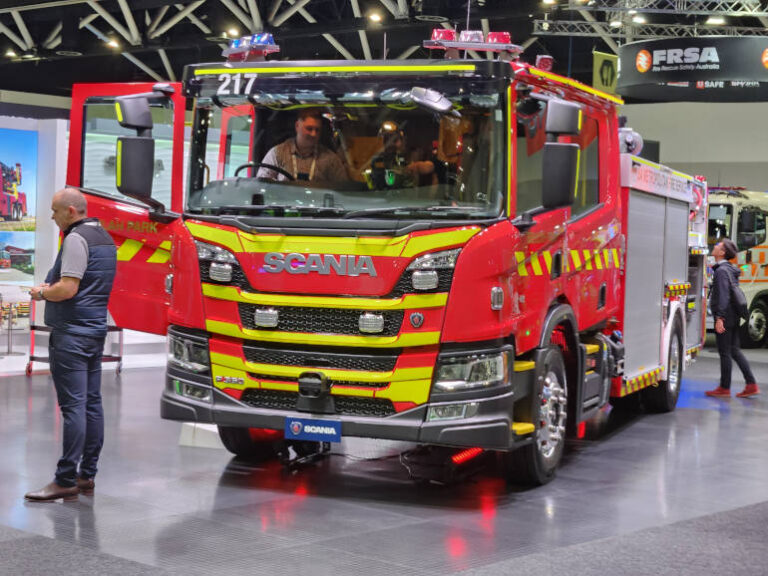Scania’s simple yet effective modular approach to the future of electric heavy vehicles.
The Scania ‘P Cab’ platform shines a new light on the Swedish manufacturer’s plans for the future. Whilst attending AFAC 2024, Fleet News Group spoke to Matt Calvitto, Fleet Manager at Scania Australia.
The hero vehicle at AFAC this year was the P series chassis P360, which was proudly on display in a South Australian Metropolitan Fire Services livery. The P Cab has been trusted by a variety of firefighting services for several years, thanks to consistent design which focuses on driver familiarity across vehicle generations.
Scania’s modular platform allows for different power plants to fit into the same versatile chassis. The Scania ‘P’ platform is the shortest and lowest cab in their HV range. Best suited for urban and regional transport, the P Cab uses a ‘building blocks’ philosophy to best suit a customers’ needs. Buyers can opt for one of three cabs, a choice of four gearboxes including the iconic Allison gearbox, and one of four Euro-6 compliant engines, which range from seven to thirteen litres of displacement and can run on a diverse range of fuels: ethanol, diesel, biodiesel and gas. The introductory ‘P Short’ cab has a base height of 2920mm, and a base output of 220 horsepower and 1000 Nm of torque. The sleeper cab can be as tall as 3520mm (highline trim without wind deflectors), and can output as much as 560 horsepower and 2800 Nm of torque.
Scania are in the final stages of developing their new generation of electric power plant with the intent to bolt into the P series chassis without modification.
Calvitto disclosed that the two largest hurdles with electric power for Scania are space and weight. With a range target of 300 kilometres for road-going P cab fire trucks, plus a sophisticated all electric drivetrain (which includes a two, four or six continuous speed E-machine gearbox and large array of batteries), finding space within the existing chassis and keeping weight distribution has proven challenging. Calvitto was adamant that Scania will continue to modify the P series platform until these hurdles are overcome, and assured that Scania would deliver on their promise for a turn-key electric heavy vehicle solution.
According to Calvitto fire crews Scania trucks due to prefer consistency of design even when technology is evolving. Being “instantly familiar” with the layout of cab, interior and auxiliary equipment saves time, and lives, during emergency situations.
Scania have strived to standardise the layout of fleet purchased fire trucks as, “emergency services can’t afford for layout to be changed around and moved” [Calvitto]. This is a driving reason for why Scania have pushed to overcome electric heavy vehicle design challenges to keep the future of their product as similar to existing ICE products as possible.
It’s evident that despite facing engineering complications to fit an all-electric drivetrain a ‘built to specification’ approach to road-going firefighting vehicles is indispensable. In an industry where every second counts, firefighters cannot be confused or unfamiliar with fire truck design.






